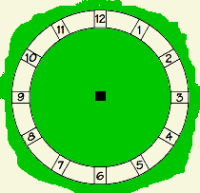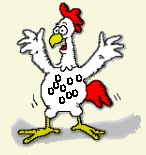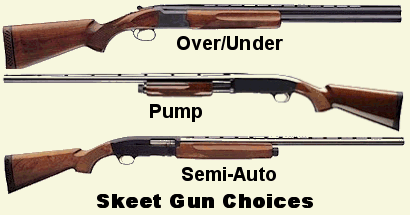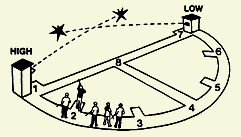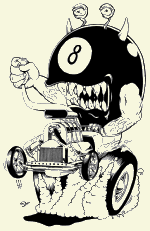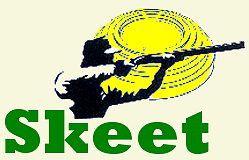
Beginner's introduction to a truly American shotgun game Shotgun World Bonus Member Newcomers to the game of Skeet will find the basics here -- a brief history, field layout/measurements, shooting sequences, how the game's played and some useful references, plus geometric and dimensional trivia which may be of interest to those enamored of numbers or interested in building their own Skeet range. Skeet's debt to a flock of chickens Unlike trap, Skeet is a purely American shotgun game, born and bred not only in the U.S.A. but in the very cauldron of American independence -- Massachusetts. In 1920, several Andover bird hunters, casting about for a more realistic means of honing their wingshooting skills by duplicating all the shot presentations they might encounter in a live bird field, devised a scheme they called Shooting Around the Clock. The "clock" was a circle with a 50-yard diameter, a trap placed at 12 o'clock to throw targets toward 6 o'clock and shooting stations at each of the hour numbers.
And the design served their purposes perfectly -- leaving few, if any, possible field shots unpracticed. The field was set up on the grounds of C. E. Davies' Glen Rock Kennels and all went well until a neighbor moved a flock of chickens onto the adjacent property, which were soon being showered with shot from gunners on the opposite side of the
Undeterred, the innovative Davies, his son Henry and their friend William H. Foster simply got a second trap and set it at 6 o'clock to throw toward the 12 station, thus cutting the range in half so all the shots went in a direction away from the beleagured cluckers, yet maintained all the left and right shot presentations from the original field. But as shotgunning matters are wont to go, practice eventually gave way to the trio's competitive natures and the seeds of Skeet were sown. Foster devised a shooting program containing all the necessary elements of wingshooting practice and a competitive sport, adding among other refinements four sets of doubles and an optional shot. When the details of the sport were completed and tested and a set of rules drawn up, the idea was introduced to the public in the February, 1926, issues of two outdoors magazines of the day -- National Sportsman and Hunting and Fishing. A prize of $100 offered to the person who came up with the best name for the new sport went to Mrs. Gertrude Hurlbutt of Dayton, Montana, who suggested skeet, an old Scandinavian form of the word "shoot." So enthusiastic was the public's interest in the fledgling sport (and possibly the hundred bucks, which was meaningful money in 1926) that some 10,000 entries were received in the contest. Thus, thanks to a flock of chickens, a casual wingshooting practice informally called Shooting Around the Clock evolved into today's popular sport, with national competition, rules and an officially sanctioned Skeet field, all governed by a central organization -- the National Skeet Shooting Association (NSSA), headquartered in San Antonio, TX.
In addition to keeping member records of individual shooters and registered shoots, The NSSA hosts the World Skeet Shooting Championship, World Vintage Skeet Championship, Junior World Skeet Championship and an International World Skeet Championship annually. Skeet has developed into much more than just an aid to better wingshooting or a substitute for hunting. It is now a competitive sport and matches are conducted in four gun gauges against others of like ability, depending on their classifications. While many skeet shooters never feel the need to own or use more that one gauge of shotgun, a registered skeet competition typically features the most popular three gauges, 12, 20, 28 and the .410 bore, so named because it represents the bore diameter of the shotgun and not the gauge. The "gauge" of a shotgun is a somewhat outdated measurement whose origins date back to the days of black powder guns and is determined by the number of pellets, each the size of the gun's bore, which would weigh one pound. Any one of 12 round lead balls, for example, would fit in the barrel of a 12-gauge gun and all 12 would weigh one pound. In 28 gauge you'd get 28 balls from a pound of lead.
Most registered shoots comprise: All Bore: 12 gauge or smaller. 20 Gauge: 20 gauge or smaller. Small Gauge: 28 gauge or smaller. Sub-Small Gauge: .410 bore only. According to tests performed by the National Shooting Sports Foundation in 1980 and repeated in 1995, a beginner might be expected to break 11 out of 25 targets on the first try and gradually improve through the high teens and low 20s. A perfect score of 25 is a reasonable goal to shoot for. You can shoot skeet for practice, for fun or in a registered event. To shoot registered targets, however, you'll need to join the NSSA, whose members receive classifications ranging from E to AA and AAA, determined by how well they shot registered targets in the various events. Details of the classification system are far too complicated to go into here. Nor should you concern yourself with it or feel somehow "left out" if you have no interest in registered competition. Skeet is a game to be enjoyed by all -- from top competitor to a shooter who simply wants to dust some clays with his old "huntin' gun." You needn't feel you have to own a $10,000 Perazzi over/under, or even a $2,000 Browning or Beretta, to be accepted on the range. Fellow shooters will -- or at least should -- make you feel comfortable even if you arrive at the range with a slightly pitted Mossberg 500 you picked up for $150 at the pawn shop out on the highway. You can learn the game and how to better your scores by getting help from experienced shooters at the club, you can hire an instructor or you can buy some good instruction books or videos. 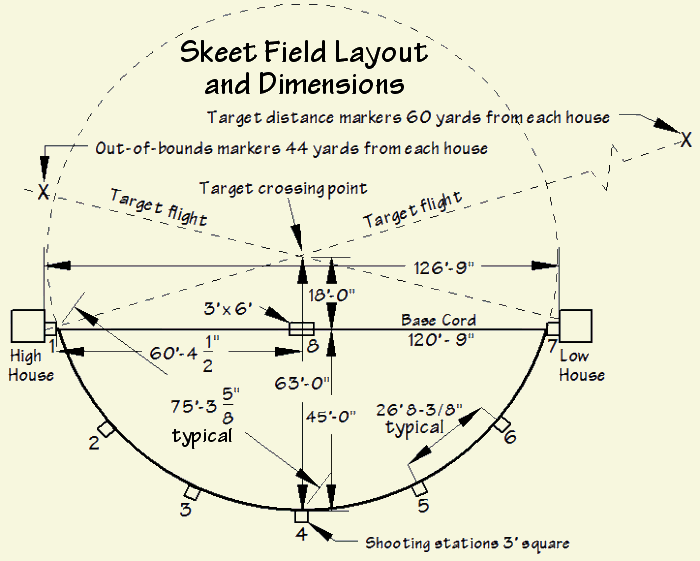 Dotted lines in the Skeet field diagram above are all that remain to hint at Skeet's early days, but they serve to illustrate the game's total dependence on the original circle for its very form and existence. For the geometric-minded, the working area of a Skeet field is actually a sector of a large circle formed by the target flight paths originating from each side of the circumference and meeting in the circle's center at the target crossing point. The entire circle's circumference is 395.84 feet and its area is 12,468.982 square feet -- or almost three-tenths of an acre. The sector's area is 5,091.501 square feet -- or slightly over one-tenth of an acre. The portion of that sector likely most familiar to a Skeet shooter is a segment of the circle described by the 120'-9" base cord running between the front edges of Stations 1 and 7 and the arc below comprising Shooting Stations 1 through 7. The segment contains 4,010.665 square feet and the stations arc length is 161.635 feet. Admittedly, those square footage figures won't improve anyone's Skeet game, but knowing them is a big help for someone building a range and planning on instant grass in any or all areas using pallets of sod, each of which will cover 400 square feet. Sodding only the area inside the station arc out to the target crossing point and across to above both houses would require 16 pallets. To sod the entire rectangle you'd need 19.8 pallets. The Skeet range has a High House on the left and a Low House on the right, each housing a trap machine which throws the targets from their windows at 17-degree angles from the base cord
The center of the High House window is 10 feet above Station 1 and directly over the head of the shooter. The center of the Low House window is 3 feet, 6 inches above Station 7 and to the right of the shooter. Regulation targets travel at about 45 mph in a rainbow trajectory for 60 yards and must cross the center stake at an elevation of 15 feet above the surface of the shooting stations, all of which must be at the same level. Periodically, the trap machines are checked to make sure they're throwing regulation targets. This is done with a device called the hoop, a pole on the top of which is a metal circle 3 feet in diameter, the center of which must stand 15 feet above the target crossing point. With someone holding the hoop at the target crossing point, another person adjusts the trap machines vertically and horizontally until they throw their targets pretty much through the center of the hoop. The throwing arm of the trap has a rail against which the target rests and which imparts a spin to it when released, creating a gyroscopic effect which lends stability to the spinning disk. The targets themselves are made of lime and pitch, which is poured into molds and "warmed up" but not baked, as in a kiln, then the colors are painted on. They're available for different games in a variety of styles, sizes and colors -- standard, mini clays, midi clays, battue, clay rabbits -- but the standard Skeet target is round, dome-shaped, 108mm (4-1/4") in diameter and about one inch high. Around 1870, clay was first used to create targets, but it was difficult to attain consistent hardness. In 1880, the mixture of lime and pitch was found to create a target that had the ideal combination of sturdiness and brittleness. Although the targets are no longer made from clay, the name has carried over. And no doubt even the new biodegradable targets, constructed of finely pulverized limestone, sulfur and some other binders, which supposedly self-destruct in about two years with enough rainfall, will continue to carry the "clays" moniker. How the game's played While it's readily apparent that geometry, mathematics and precise measurements are important in the construction of the Skeet range itself, the math doesn't end there. It also plays a significant role for the shooter, whose goal is to break targets -- even though he may be completely oblivious to what a mathematical feat he's performing when he breaks one. Skeet is a game of angles and mathematical formulas involving time, speed and distance, which translate into the necessity of shooting a certain distance ahead of each target so that shot string and target meet physically somewhere along the target's flight path, resulting in a "dead" bird. This is known as lead, and the lead necessary for breaking each target changes by some amount from Skeet station to station because the shooting distances and angles change. And that's the challenge of the game, but more on that shortly... At its most basic, a round of Skeet involves one box of 25 shotgun shells per shooter, which will be fired at eight stations, the usually concrete pads on which each shooter stands to take his turn. Normally, no more than five shooters, called a squad,
The shooters begin a round at Station 1 in front of the High House and progress around the arc to Station 7 in front of the Low House, ending at Station 8 exactly at the middle between the two houses. Target shooting sequences at each station: Stations 1 and 2: High House single, shot first; Low House single; High and Low House doubles, with the High House shot taken first. (Four shots at each of the two stations.) Stations 3 through 5: High House single, shot first; Low House single. (Two shots at each of the three stations.) Stations 6 and 7: High House single, shot first; Low House single; High and Low House doubles, with the Low House shot taken first. (Four shots at each of the two stations.) Station 8: High House single, shot first; Low House single. If by now the shooter has missed no targets, the 25th shot is taken at the Low House. Optional shot: This, which would be the 25th shell for a shooter who has missed no shots through Station 8, is taken for a second try at the first target missed at any station. NOTE that at every station the High House shot is taken first except on doubles at Stations 6 and 7, when you shoot the Low House target before the High House. Just remember that and you won't get confused over which house to shoot first. Now, back to some basics on that tricky business of lead -- shooting ahead of a target. Mathematically, one could stand and point the shotgun like a rifle at a certain spot ahead of the target in its flight path (gun point), then pull the trigger when the target reaches a certain point on its path (pre-intercept point) -- and break the target without ever moving the gun from its static position. Mathematically, it's just a time, speed and distance equation. The only problem is, it won't work in the real world, because on a practical basis no shooter could consistently know or time his shot at the exact gun point and pre-intercept point.
So the shooter must swing with the target and lead it by a certain distance to account for the time it takes to pull the trigger, the shell to fire and the shot string to travel into the target's path so the target runs into it. There are three methods of leading a target, but we'll not dwell on them here beyond a simple description of each, since the purpose of this introduction is only to serve as an overview of Skeet and there's much material available elsewhere on the pros and cons of each. Sustained, or maintained, lead: The shooter picks up the target in his peripheral vision as it emerges from the window, immediately begins moving ahead of it, adjusts for the correct lead distance and fires the instant that distance is seen, keeping the gun moving after the shot. This is the lead used by most Skeet shooters today. Swing-through lead: The shooter allows the target to get ahead of the gun, swings through it and fires the instant he judges he has the correct lead, keeping the gun moving after the shot. Pull-ahead lead: The shooter swings to the target when he sees it, then quickly pulls ahead to what he considers the correct lead and fires instantly, keeping the gun moving after the shot. Notice that no matter what method is used, the shooter fires instantly when he sees the necessary lead. This is important because these targets are moving fast and offer little or no margin for tinkering around with minor adjustments. The beginning shooter will likely anquish for some time over exactly which lead method is best for him, and only he can decide that, but there should be no indecision nor questioning the need to keep the gun moving after the shot -- known as follow-through. Without follow-through, no matter what lead method you use or what distance your lead, you'll almost certainly miss the target. It's called stopping the gun, and it probably accounts for more misses on a Skeet range than any other mistake. And, of course, you must be swinging the gun on the same horizontal plane as the target. Shooting over or under the target causes many misses and shooting over it accounts for most of those. If you don't see the target on or just above the front bead of your gun, you're probably about to shoot over it.
The leads in the table were taken from Skeet Shooting with D. Lee Braun and the Remington Pros, an excellent book by a champion Skeet shooter who shot on the Remington Firearms Company's team for many years. Even so, they're not chiseled in stone. The amount of lead required to break a target is highly variable from shooter to shooter because it depends greatly on how fast the shooter swings the gun. Only with constant and consistent practice will you get the feel of how much lead on each station works best for you. When you break a target, try to remember the sight picture and lead that did it, then try to repeat it the next time on that target. In general, try to break going-away targets before or near the center stake and let incoming targets go past the stake and come to you. There's no sense in trying to break an incoming target while it's still far away from you, when you can break it easily when it's nearby. Station 8... Grrrrrrrr... If not actually trick shots, the High and Low House targets from Station 8 are definitely tricky and guaranteed to frustrate the beginning shooter. At this station, you're a mere 18 feet from the target crossing point and must break each target before it passes that or it's counted as a miss. And since you're also only about 20 yards from the window and the target is coming almost straight at you, it will be at and beyond you before you know it if you're not fully alert and prepared. Give yourself the maximum advantage on this close-in target by standing in the right-rear corner of the pad for the High House and the left-rear corner for the Low House. Station 8 can be extremely daunting, but there's a way to avoid the angst and ease into this bugger
How to learn Station 8: Don't start out shooting from Station 8. It's that simple. To learn the High House, for example, walk about halfway between Station 8 and the Low House and shoot it from there. Then as you begin breaking targets gradually move closer to Station 8 until you can break them from there. For the Low House, do the opposite. For all Station 8 shots, start with the gun pointing about three feet outside the window on the target's flight path and look at the window. When the target appears, swing at and with it smoothly and quickly, cover it up and shoot the instant it's covered -- and keep the gun moving. And the more open your choke is on this face-hugger, the better chance you'll have of breaking it. It can be broken fairly easily by an accomplished shooter with a modified choke -- or even a full -- but you should avoid any choke of tighter constriction than improved cylinder, at least while you're learning. To shoulder or not to shoulder Should you pre-mount the gun before calling for a target -- or should you use the unmounted gun method, pushing the gun five or six inches away from your shoulder and dropping the bottom of the butt just below the elbow? Virtually all the oldtimers of decades ago started with an unmounted gun. Virtually all skeet shooters today start with a mounted gun. Only you can decide which works best for you. Try it both ways and decide for yourself. International (Olympic) Skeet International is a variation of American Skeet and is the style shot in the Olympics. It has an eight-station format like American Skeet but with faster targets thrown at 72 meters (78.73 yards). The shooter is required to hold the butt of the gun at hip level until the target is seen, which may be delayed for up to 3.5 seconds after the target is called for. Single and double target sequences are slightly different from American Skeet, with a high single and one pair of doubles from Stations 1 & 2; high and low singles and one pair of doubles from Stations 3, 4 and 5 (on Station 4, the high bird must be attempted first in doubles); a single low and a double from Station 6; one pair of doubles from Station 7; a single high and a single low from Station 8. A round is 25 targets, with no option shot. The shot charge is restricted to 24 grams (approx. 7/8 oz.), with any safe powder charge. For tournaments, all shells must be of the same type and load. Safety and Skeet range etiquette When you're not on a station getting ready to shoot, ALWAYS keep the receiver of your gun open so there'll be no question in fellow shooters' minds whether it's loaded or not. Open your O/U or the bolt on your semi-auto or pump shotgun. It's just the safe and sensible thing to do. Also, you won't look like an amateur and draw the scorn of other shooters. NEVER load your gun until you're on a station and it's your turn to shoot. Call for the target so the puller won't have to strain to hear you. Occasionally, a shooter will have his own pet word to call for a target, but the traditional words are PULL! for the High House and MARK! for the Low House. However you call for the target, do it in a strong, commanding voice. Otherwise, don't blame the guy with the switch in his palm for giving you a slow pull. And if you're the guy with the switch, focus your attention on the current shooter and not the other shooters' chit-chat going on around you. at a great American shotgun game!  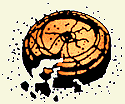
| ||||||||||||||||||||||||||||||||||||||||||||||||||||||||||||||||||
